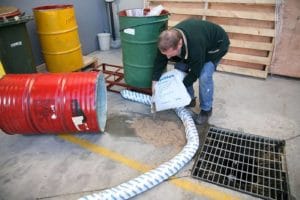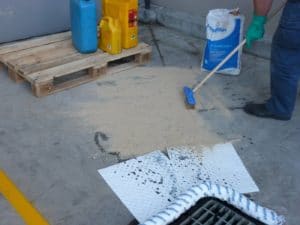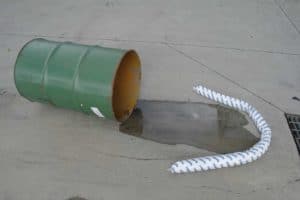When dealing with hazardous materials, it’s crucial to have the right spill containment measures in place. One such measure is the use of spill pallets. But how do you choose the right one? Here’s a detailed guide to help you make an informed decision.
Understanding Spill Pallets
Spill pallets are containment tools designed to catch and hold spills from containers, typically drums or Intermediate Bulk Containers (IBCs). They are an essential part of a robust spill response plan, helping to protect workers and the environment from hazardous spills.
Factors to Consider When Choosing a Spill Pallet
1. Material Compatibility
The first thing to consider is whether the pallet material is compatible with the substances it will contain. Polyethylene pallets, for instance, are resistant to most chemicals, making them a popular choice for many applications.
2. Size and Capacity
The pallet should be large enough to hold your containers comfortably. Additionally, it should have a sump capacity sufficient to contain any spills.
3. Load Capacity
The pallet must be sturdy enough to support the weight of your fully loaded containers. Overloading a pallet can lead to spills and other safety hazards.
4. Regulatory Compliance
Ensure the spill pallet meets relevant regulations for spill containment. Here are some examples:
- Protection of Environmental Act 2017
- National Construction Code
- ISO14001Section 4.3.1
- Work Healthy & Safety Regulations 2017 Reg 357
- National Construction Code 2022
- AS1940 The Storage and Handling of Flammable and Combustible Liquids
- AS4326 The Storage and Handling of Oxidising Agents
- AS3780 The Storage and Handling of Corrosive Substances.
- AS3961 The Storage and Handling of Liquefied Natural Gas
5. Space Efficiency
If space is a concern, consider modular or stackable designs. These allow you to store more containers in the same footprint, helping to maximize your storage efficiency.
6. Durability
Look for a pallet with robust construction that can withstand the rigors of your operation. Features like corrosion resistance and UV protection can help extend the life of your pallet.
7. Cost-effectiveness
Finally, balance all the above factors against your budget. The most expensive pallet isn’t necessarily the best for your needs. Look for a solution that offers the best value, considering both upfront costs and long-term durability.
Chatoyer offers a wide range of options that cater to your organisation’s need. With a variety of sizes, capacities, and materials, you can find a spill pallet that perfectly fits your specific requirements.
Whether you’re dealing with hazardous chemicals or simply want to prevent workplace spills, Chatoyer’s spill pallets provide an effective and reliable solution. Our pallets are designed with safety and efficiency in mind, ensuring that your operations run smoothly while complying with WHS & EPA Guidelines.
Below is a chart guide to help you navigate and choose the right Spill Pallet for your requirement.







